If you have just found a dried dead tick on your dog, as I did, firstly, don’t panic. When alive, ticks bury their heads into a dog’s skin and drink the blood. In this case, the tick is not doing that because it’s dead. So that’s one positive. But you do need to remove it straight away!
Preparation For Removal Of Ticks
- Antiseptic cream made for dogs
- Gloves
- Tick removal kit or tweezers
- Dog treats
How To Remove A Tick From A Dog
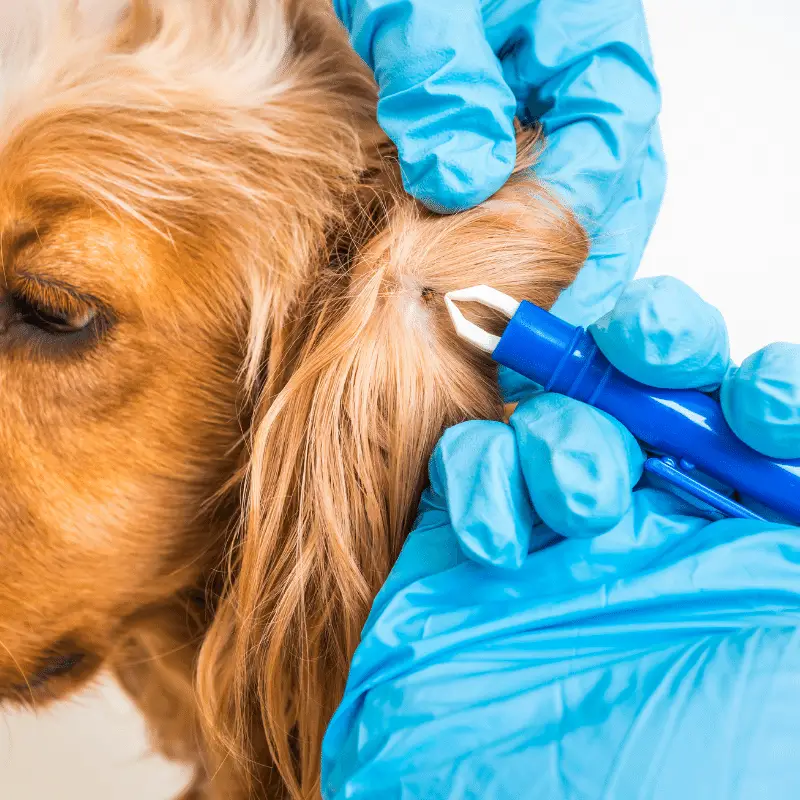
The below will work for removing a dead or an alive tick
Text Format:
You will need Fine-tipped tweezers or a tick-removal tool and an antiseptic wash.
To remove a tick safely, follow the instructions below
- Grasp the tick as close to your dog’s skin as possible.
- Slowly pull upwards, taking care not to squeeze or crush the tick. Dispose of it when you have removed it.
- Clean the bite with an antiseptic wash.
Video Format:
You will need Fine-tipped tweezers or a tick-removal tool and an antiseptic wash.
To remove a tick safely, watch the video below.
[lyte id=’_BZ6_zWmzeMg’ /]
Why You Should Never Ever Do This When Trying To Remove A Tick
- Using a lighter or a match to remove a tick from your dog is never safe. This can cause skin burns and be very dangerous.
- Never use hydrogen peroxide, bleach, or dish soap because the ticks regurgitate toxins back into the dog before letting go.
Tick Aftercare For Dogs
After tick removal, you may see some irritation around the bite. However, if you notice any signs of infection or a foul smell, you must take your dog straight to the veterinarian. Otherwise, wash the area with an antiseptic wash made for dogs. This will help the area heal better and settle down in a day.
Will It Harm My Dog? Should I be Worried?
A dried dead tick can harm your dog if it has once been alive and feeding on it for around a day prior. After this time, the feeding is generally complete, and the tick may transmit a bacterial infection to your dog called Lymes disease before it dies.
Don’t worry too much because no more than 10% of the ticks in question have the bacteria that can cause Lyme disease.
If the tick is tiny, empty and shrivelled, likely, it’s not passed on anything.
- Leaving the dead tick on your dog can cause its skin to become red and inflamed, and irritated.
Engorged Tick/Non-engorged
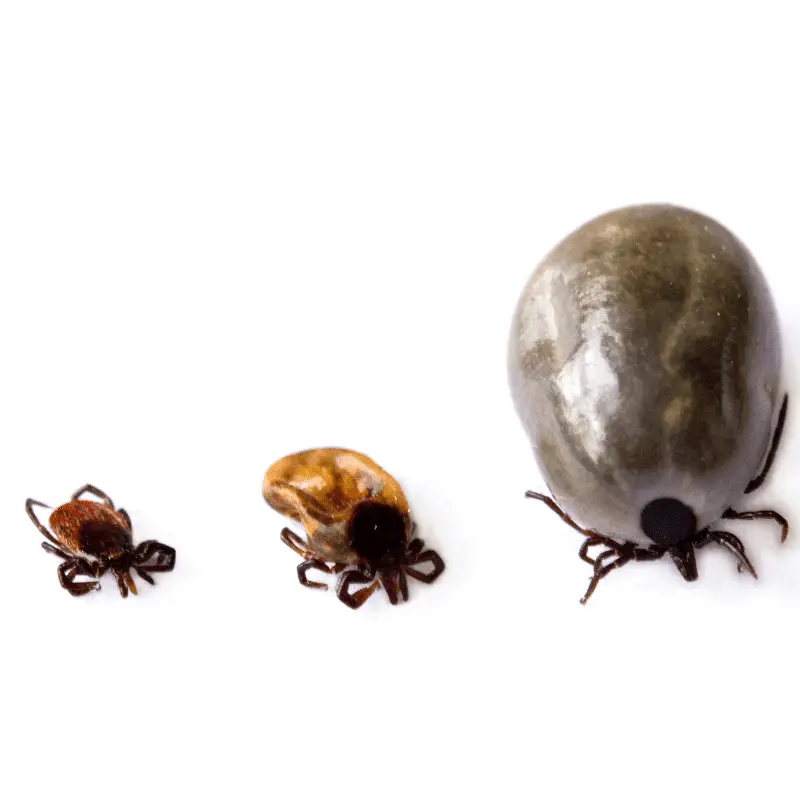
Engorged: ticks full of food (blood) are called engorged ticks.
Non-engorged: ticks that are thinner and not full of blood are called non-engorged ticks.
Lymes Disease
Remembering that not all ticks carry Lyme disease, it’s still important to learn about it, how to notice the symptoms of Lymes disease in dogs and how to safely remove the ticks as soon as possible.
Lyme disease is a bacterial infection spread to dogs, other animals, and humans by infected ticks. The bacteria that cause Lyme disease are transmitted through the bite of an infected tick.
Symptoms of Lymes Disease In Dogs
These can occur up to 48hrs after transmission. However, some dogs don’t show symptoms at this time but can do further on, up to two to six months later. This is why tick prevention is most important.
- Bulls-eye rash
- Fever
- Joint pain
- Lameness
- Lethargy
- Loss of appetite
- Sickness and diarrhoea
- Swelling joints
- Swollen lymph nodes
Treatment involves antibiotics and monitoring. If not treated, Lyme disease can damage a dog’s kidneys, nervous system, and heart.
High-Risk Tick Environments
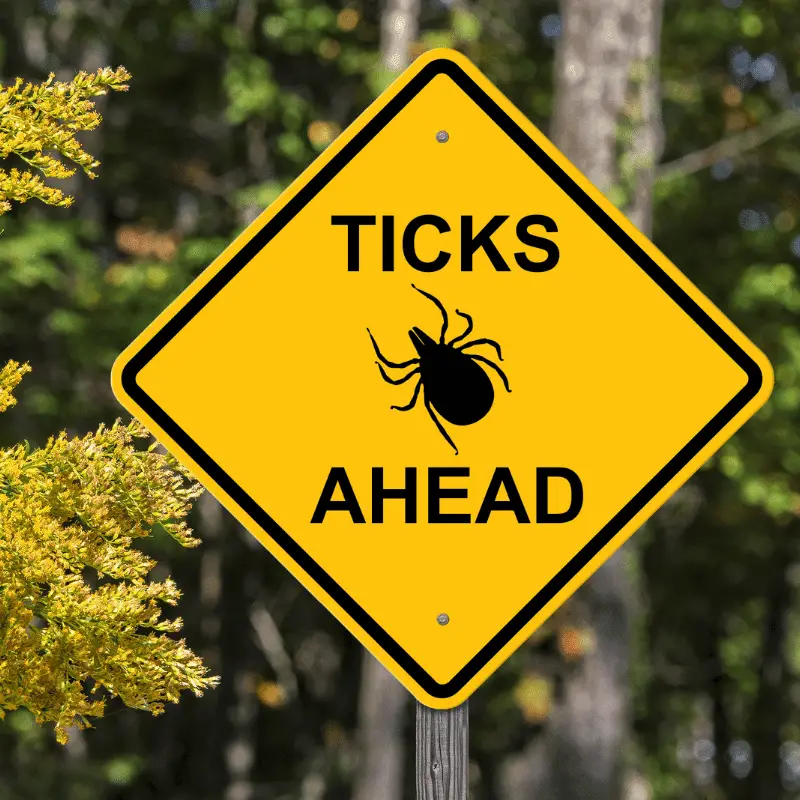
Ticks can be found anywhere and in any country. However, high-risk environments like grassy and wooded areas will more likely attach themselves to your dog.
Ticks love warm and hidden areas on a dog, such as between the paws, inside ears, armpit area, under the collar and groin area.
Tick Prevention: Stop Future Ticks From Becoming A Problem
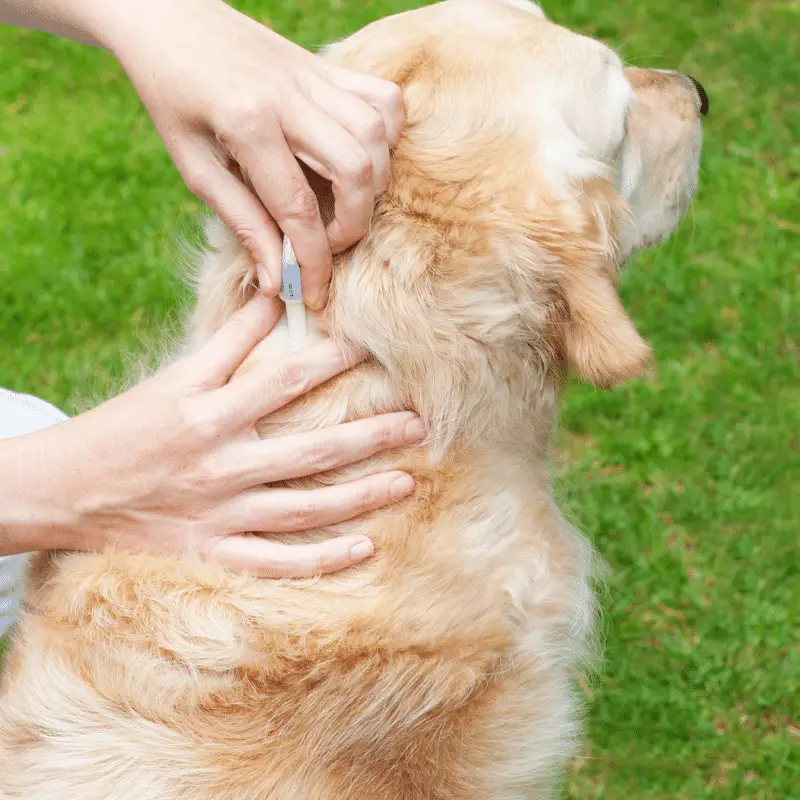
- Fur checks after walks
- Regular grooming
- Regular tick prevention treatments
- Tick repellent shampoo
Dried Dead Tick On Dog: Should it Fall Off On Own?
Once the sharp teeth of a tick are secured in place on the skin, regardless if it’s dead, the teeth can remain firmly shut. You will find the body dry, dark, shrunk in size or shrivelled. It means there isn’t much hope for a dead tick just falling off on its own.
There are two ways a tick will fall off. One is if you remove it yourself. The other is if the tick eats enough to move on to the next victim.
Please note that a dead tick’s head can still be buried deep in your dog’s skin while its body may have dried, shrunk, and fallen off. In this case, the ticks head will still need removing using the tweezer method, or you may be able to pinch behind it and push it to the surface. Make sure you apply an antiseptic wash after.
Dead ticks may not always fall off a dog on their own. If the tick has latched on tightly, it will need to be removed using tweezers.
Bad Case of Ticks On A Dog
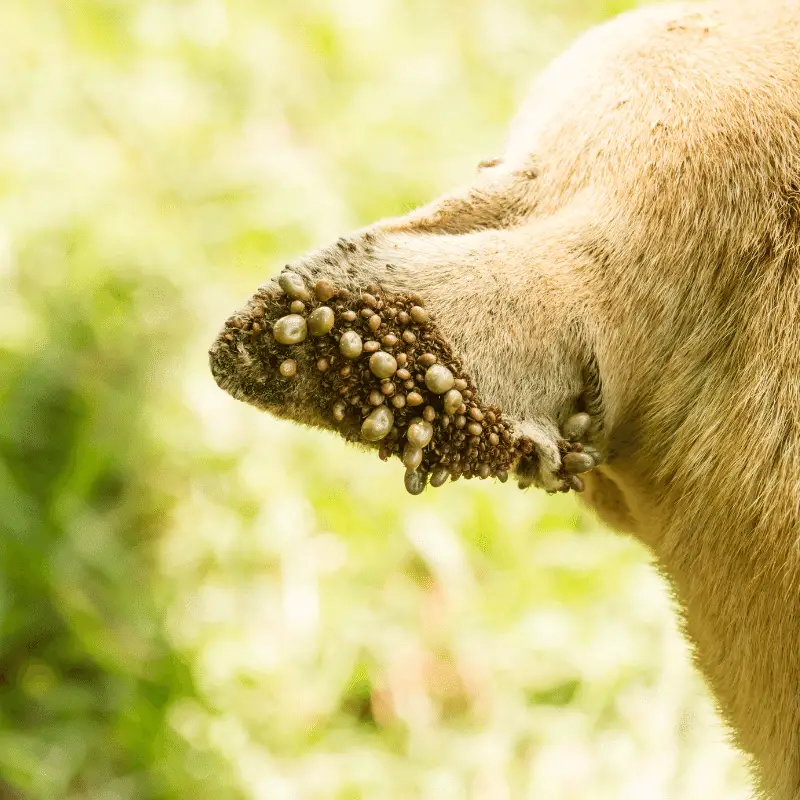
Ticks Don’t Like To Move Around
The good thing about ticks is they dont like to move about once they attach themselves to a dog’s skin using their razor-sharp teeth. So if you can’t get the tick off yourself, you can get a vet’s appointment and know it will not move about. It will always be in the same place, ready for extraction.
Key Points
- Don’t Panic
- Only 10% of fleas carry Lymes disease
- Ticks are easily removed even when dried and dead
- After removal, put on an antiseptic wash
- Future Prevention, checks, grooming, and regular tick treatment are a must
Are you having problems with fleas? If so, don’t use cat flea treatment because it won’t work. Find here an article about fleas—another common annoyance for dog parents.
Antiseptic Cream Made For Dogs
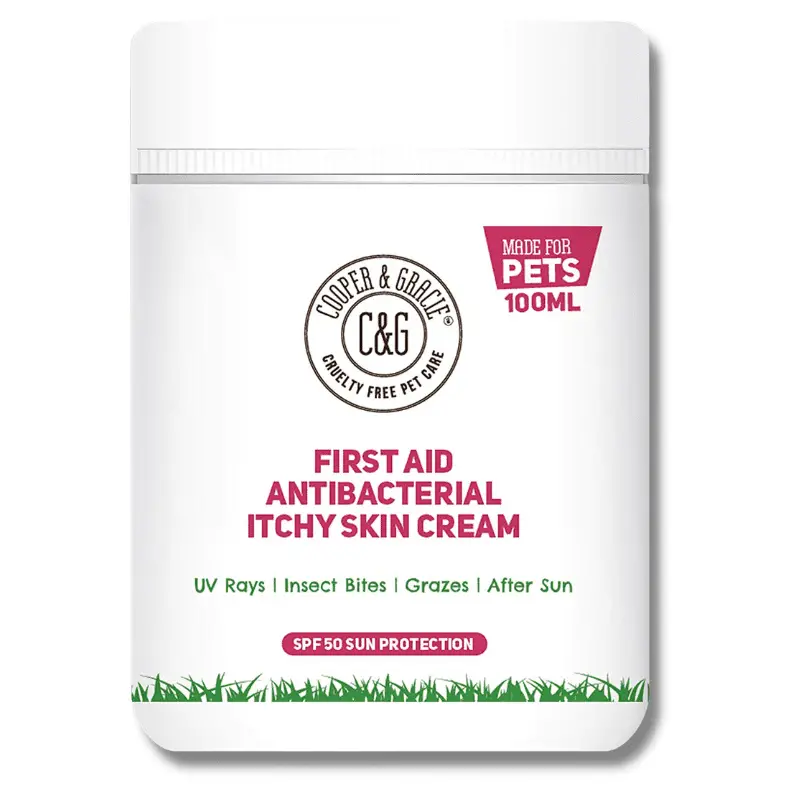
C&G PETS | FIRST-AID ANTIBACTERIAL ITCHY SKIN CREAM WITH SPF 50 | 100% NATURAL ESSENTIAL OIL | MAINTAINS CRACKED ITCHY SKIN | LICK-SAFE NON-TOXIC NON-IRRITANT |HIGHLY ABSORBENT SUN CREAM FOR DOGS 100ML.
